
Brisbane Showgrounds is located at 600 Gregory Terrace, Bowen Hills, Brisbane, Queensland, Australia and was established in 1875. It hosts almost 300 events each year, with the largest being the Royal Queensland Show (Ekka).

Cooroy railway station is a heritage-listed railway station at 14 Myall Street, Cooroy, Shire of Noosa, Queensland, Australia. It is on the North Coast railway line serving the town of Cooroy. It was designed by the Office of the Chief Engineer of Queensland Rail and built in 1890 by Fitzwilliam Williams. It opened on 17 July 1891 with the opening of the line from Cooran. It was added to the Queensland Heritage Register on 14 August 2008.
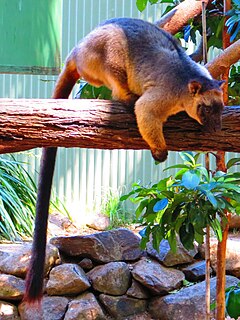
David Fleay Wildlife Park is a heritage-listed wildlife park at Fleays Wildlife Park Conservation Park, Tallebudgera Creek Road, Tallebudgera, Queensland, Australia. It was built from 1952 to 1983. It is also known as Fleays Wildlife Park. It was added to the Queensland Heritage Register on 23 February 2001.
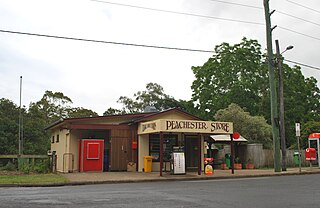
Peachester is a small town and locality in the Sunshine Coast Region, Queensland, Australia.

Mayes Cottage is a nineteenth century, heritage-listed house museum located at 20 Mawarra Street, Kingston, City of Logan, Queensland, Australia. Originally called Pleasant Place, it was built in 1887 by the Mayes Family. It was added to the Queensland Heritage Register on 21 October 1992.
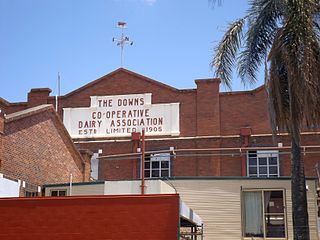
The Downs Co-operative Dairy Association Limited Factory is a heritage-listed factory at 57 Brook Street, North Toowoomba, Toowoomba, Toowoomba Region, Queensland, Australia. It is also known as Dairy Farmers Factory. It was added to the Queensland Heritage Register on 18 April 2008.

Schmidt Farmhouse & Outbuildings is a heritage-listed homestead at 3 Worongary Road, Worongary, City of Gold Coast, Queensland, Australia. It was built from 1880s to c. 1910. It was added to the Queensland Heritage Register on 8 April 1997.

Kingaroy Butter Factory is a heritage-listed former butter factory at 67 William Street, Kingaroy, South Burnett Region, Queensland, Australia. It was designed by Waugh and Josephson and built in 1926. It was added to the Queensland Heritage Register on 9 November 2012.
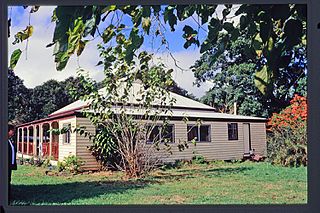
Fairview is a heritage-listed house at 15 Porter's Lane, Maleny, Sunshine Coast Region, Queensland, Australia. It was designed and built in 1907 by the Pattemore family. It is also known as Armstrong's House and Pattemore House. It was added to the Queensland Heritage Register on 4 September 2003.

Mary Valley Railway Cream Sheds are heritage-listed sheds at Kandanga railway station, Amamoor railway station and Melawondi railway station, all of them on the Mary Valley Branch Railway, Mary Valley, Gympie Region, Queensland, Australia. It was designed by Queensland Railways and built by Queensland Railways. It was added to the Queensland Heritage Register on 14 October 2011.

Wodonga House is a heritage-listed farmhouse at Woolooga Road, Widgee, Gympie Region, Queensland, Australia. It was built in 1902. It was added to the Queensland Heritage Register on 21 October 1992.
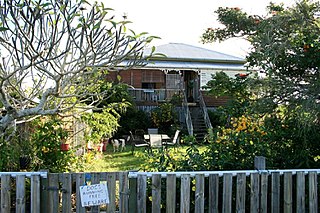
Colonsay Farm is a heritage-listed farm at 125 Doolong Road, Kawungan, Fraser Coast Region, Queensland, Australia. It was built in 1909. It is also known as Doolong Farm. It was added to the Queensland Heritage Register on 11 March 2011.

Port Curtis Co-operative Dairy Association Ltd Factory is a heritage-listed former factory at 6 Short Street, Gladstone, Gladstone Region, Queensland, Australia. It was built from 1929 to 1949. It is also known as PCD Factory and Port Curtis Co-operative Dairy Company Ltd Factory. It was added to the Queensland Heritage Register on 30 March 2001.

Townsville Showground is a heritage-listed showground at 72-104 Ingham Road, West End, City of Townsville, Queensland, Australia. It was added to the Queensland Heritage Register on 16 October 2008.
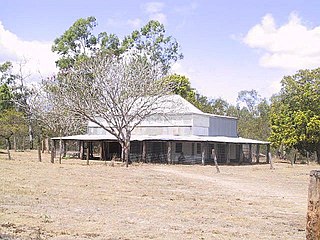
Old Laura Homestead is a heritage-listed homestead in Lakefield National Park, Lakefield, Shire of Cook, Queensland, Australia. It was built from 1902 onwards. It was added to the Queensland Heritage Register on 28 July 2000.

Butchers Shop is a heritage-listed butcher shop at 2 Kehoe Place, Yungaburra, Tablelands Region, Queensland, Australia. It was built c. 1922. It was added to the Queensland Heritage Register on 21 October 1992.

Murgon Civic Centre is a heritage-listed town hall at 62-70 Lamb Street, Murgon, South Burnett Region, Queensland, Australia. It is also known as Murgon Public Hall. It was designed by Clifford Ernest Plant and built in 1938 by HG Neilsen. It was added to the Queensland Heritage Register on 9 November 2012.

South Burnett Co-operative Dairy Association Factory is a heritage-listed former factory at Macalister Street, Murgon, South Burnett Region, Queensland, Australia. It was designed by George Gerald Hutton and built in 1929 by H Taylor. It was added to the Queensland Heritage Register on 9 November 2012.
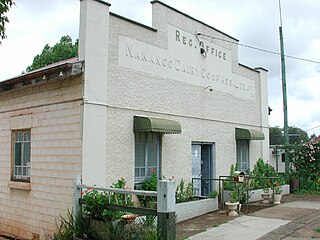
Nanango Butter Factory Building is a heritage-listed factory at George Street, Nanango, South Burnett Region, Queensland, Australia. It was built in 1927. It was added to the Queensland Heritage Register on 3 June 2005.

Animal Research Institute Buildings is a heritage-listed set of research station buildings at 681 Fairfield Road, Yeerongpilly, City of Brisbane, Queensland, Australia. It is also known as Stock Experiment Station (1909-1932) and Animal Research Station (1932-1953). It was added to the Queensland Heritage Register on 13 June 2008.























